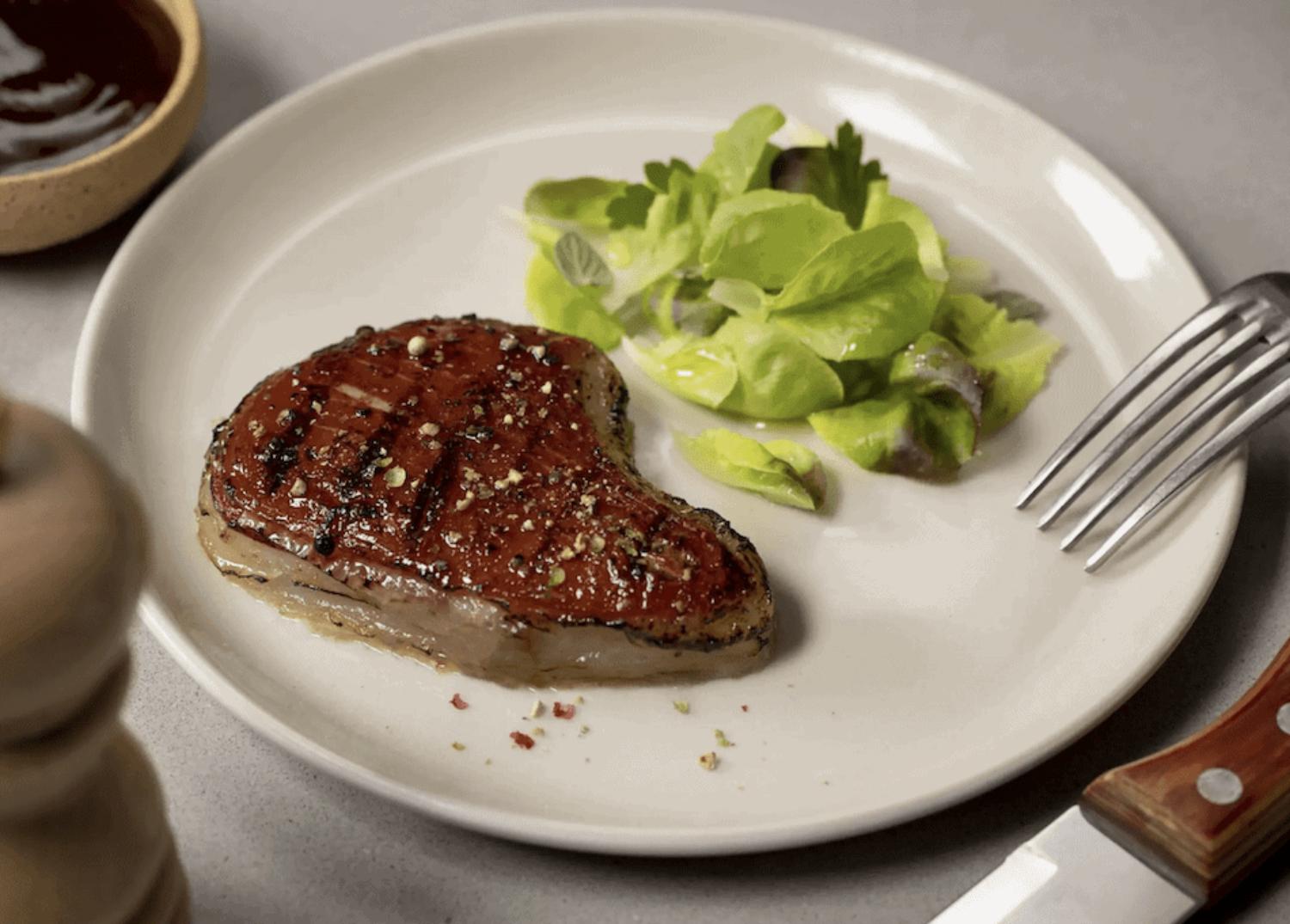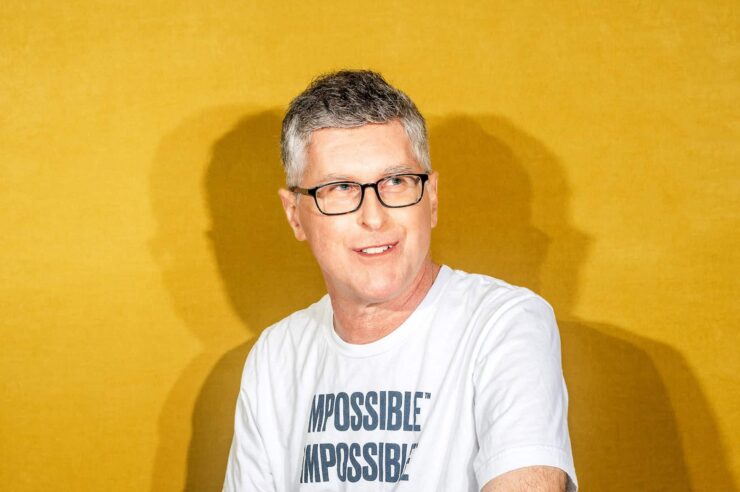No-kill burgers, low-carbon steaks, rewilded farmland – that’s what the cultured meat industry promises. But can it deliver?
We now know that the egg came first. Then the chicken. At least, that’s how Eat Just has done things.
In 2019, the US cultured meat company began selling vegan eggs made from mung beans. Compared to conventional eggs, their version required 98 per cent less water to produce, used 86 per cent less land and emitted 93 per cent fewer CO2 emissions. Or so they said.
A year later, they started selling lab-made chicken in Singapore, the world’s first cultivated meat product approved for human consumption. Compared with a conventional chicken, it needed 78 per cent less water, 95 per cent less land, and emitted 92 per cent fewer CO2 emissions, according to the firm.
The feedback from diners? A surprised: “Oh, this tastes like chicken.”
Not the response a chef would conventionally want to hear, but it was good news for Josh Tetrick, the CEO and co-founder of Eat Just. Their GOOD Meat chicken had passed the taste test and made it to market. Now the company aims to scale up production.
“We see a place in the world… where conventional meat feels like the horse and buggy, conventional meat feels like a flip phone,” says Tetrick.
But will cultured meat consumption ever overtake conventional meat?
‘A double win’
The world has a food production problem. Our existing agricultural processes mean we won’t have enough land available to feed an estimated 10 billion people by 2050.
Global meat production has more than quadrupled since 1961. Consumption has increased by nearly 87 per cent. Livestock production is now responsible for an estimated 14.5 per cent of human-induced greenhouse gas emissions. Our food system is driving biodiversity loss, deforestation and water pollution.

Livestock is a big driver of greenhouse gas emissions. Is cultured meat the answer? Image: Illiya Vjestica
“We’re already at breaking point,” says Seren Kell, science and technology manager for the Good Food Institute Europe (GFI). “We have to find an alternative.”
A non-profit organisation promoting research into cell-based meats, the GFI has called for more government investment to help create a more efficient food system.
“Most of the calories are lost as part of growing and being an animal,” Kell says, “and then you don’t even eat most of the animal.” A chicken needs to eat nine calories to produce one calorie of meat.
We see a place in the world where conventional meat feels like the horse and buggy
That’s not all. Livestock uses an estimated 77 per cent of all agricultural land, but only makes up 18 per cent of our food supply. More than three-quarters of the soy produced worldwide is used to feed livestock.
Some in the cultured meat sector think that it’s possible to eliminate the need to raise livestock for food altogether. One analysis into cultivated meat production estimated that the switch from conventional meat would use up to 95 per cent less land.
“It’s a double win,” says Kell. “That land can then go and be a carbon sink if you use it for rewilding, reforestation and any other potential carbon storage technologies.”
But can it happen at the scale required?

Cultivated chicken dishes at the Madame Fan restaurant, Singapore. Image: Eat Just
Limitations
Cultured meat is real animal meat, produced directly from animal cells. GOOD Meat’s chicken, for example, is 70 per cent cultured chicken cells and 30 per cent plant protein for added structure and flavour. No animals are killed in making it.
It’s now on sale alongside conventional meat at the Madame Fan restaurant in Singapore. If you weren’t told, you would be unlikely to tell that the chicken Caesar salad with kale, romaine, edible flowers and shaved radish used cultured meat.
“It’s not hard to grow animal cells in culture in laboratory conditions and Petri dishes, in very small beakers,” says Simon Kahan, CEO of Biocellion SPC, who leads the Cultivated Meat Modelling Consortium (CMMC), a group that helps companies optimise bioprocessing techniques through computer modelling. “That’s been done for a very long time.”
There’s no one I can call up and say, ‘Hey, can I place an order for a 100,000-litre bioreactor?’
The major hurdles for the industry are scale and cost. Back in 2013, when Prof Mark Post of Maastricht University created the world’s first lab-made burger, it cost €250,000 (£215,000) to make.
Since then, Post has set up Mosa Meat, a cultured meat company based in the Netherlands. His firm can now produce a lab-grown burger for around €9 (£7.50), which is a fraction of the original cost, but still considerably more expensive than a regular beef patty. McDonalds’ hamburgers cost £0.89 each – and that’s after gherkins and margins have been added.
“What’s difficult is growing the cells in larger containers like beer brewing-sized containers,” says Kahan. “That’s needed to get the economies of scale up, so that the overall cost – the processing cost – is reduced.”

Mosa Meat in the Netherlands can produce a burger for around £7.50. Image: Sander Dalhuisen
Tetrick agrees. “We need bioreactors north of 100,000 litres to make tens of millions of pounds of meat,” he says. “In order to get into vessels of that size, you need to design and engineer them from scratch because there’s no one I can call up and say, ‘Hey, can I place an order for a 100,000-litre bioreactor?’”
Highlighting the scale of the challenge is a 2021 analysis by the US trade publication Food Navigator. It put forward a hypothetical scenario for cultured meat to account for 10 per cent of global meat supply by the end of the decade. Its conclusion? That the industry would need to build 4,000 facilities, each capable of producing 10 kilotonnes of cultured meat annually. Were it to achieve that, it would mean building more than one factory a day.
Another challenge is that the amino acids needed for cell-culture media – the medium in which the animal cells are grown – aren’t available in the quantities required for food production right now. Currently the media accounts for more than 90 per cent of production costs.
Kell believes that it might be possible to find cheaper alternatives that are just as effective. She also thinks there could be innovation around recycling cell-culture media and optimising cells to grow at higher densities. But as it stands, these innovations are either being trialled or purely speculative.

It looks like a regular chicken breast, but this one was lab-grown. Image: Eat Just
Through its modelling, the CMMC hopes to find some answers. It will get results on everything from how a bioreactor’s geometry can affect cells, to how different feeding schedules affect cell growth.
“This has never been done before,” says Kahan. “It’s a moon-shot project and it’ll probably take it several years to get results that will be useful to the industry. At the same time, the industry itself is a moon-shot.”
“There still are a lot of challenges,” admits Tetrick. “Everything from how do you develop the cell line? What are the nutrients that the cell will consume? How do you figure out a way to make it in the stainless-steel vessel? How do you properly work with regulatory authorities like those that we did in Singapore in order to make it more likely than not that one would get approval? They all continue to be challenges.”
Then there’s the question of whether the meat is grown in food- or pharma-grade conditions. Some experts say the latter is required, owing to how vulnerable cells will be to disease. This could push up costs.
This has never been done before. It’s a moon-shot project
Despite all this, cultured meat is coming to market. Singapore was the first to allow the stuff to be sold. Eat Just is now working with restaurants across the country to put the lab-grown chicken on their menus. The meat will also be sold at local hawker stalls by the end of February 2022.
Over in Israel, Future Meat Technologies has become the first firm to produce a chicken breast for less than $5 (£3.60), and foodies have tried their lab-grown meat at a “test restaurant” near Tel Aviv.
The industry is now waiting for the green light from other regulatory authorities. “We’re ready to go now,” says Tetrick. He thinks Eat Just could be in all major US retailers in the next three to six years.
Seren Kell doesn’t think the UK or Europe will have a mass market for cultured meat in the near future. She says that it’s more likely to appear in Australia, North America and China, which wants cultured meat to be part of its five-year agricultural plan.

MeaTech, an Israeli firm, 3D printed a 4oz steak in 2021. Image: MeaTech
“We’re probably in a position right now where a lot of the most exciting research is happening in Europe,” says Kell. “But because of our regulatory landscape and the lack of government investment to see these technologies through to completion, it will likely be commercialised in other countries first.”
The Spanish government has invested in research to introduce olive oil as the fat in cultivated meat to lower its cholesterol levels. These are the exciting tweaks lab-grown meat could introduce to our mealtimes.
Tetrick says the quest to become the world’s most consumed meat is set to be a “multi-decade, many hundreds of billions of dollars project.” But they’ve made the egg. And the chicken. Now they’re hoping they’ve got the golden goose.
Main image: Eat Just





